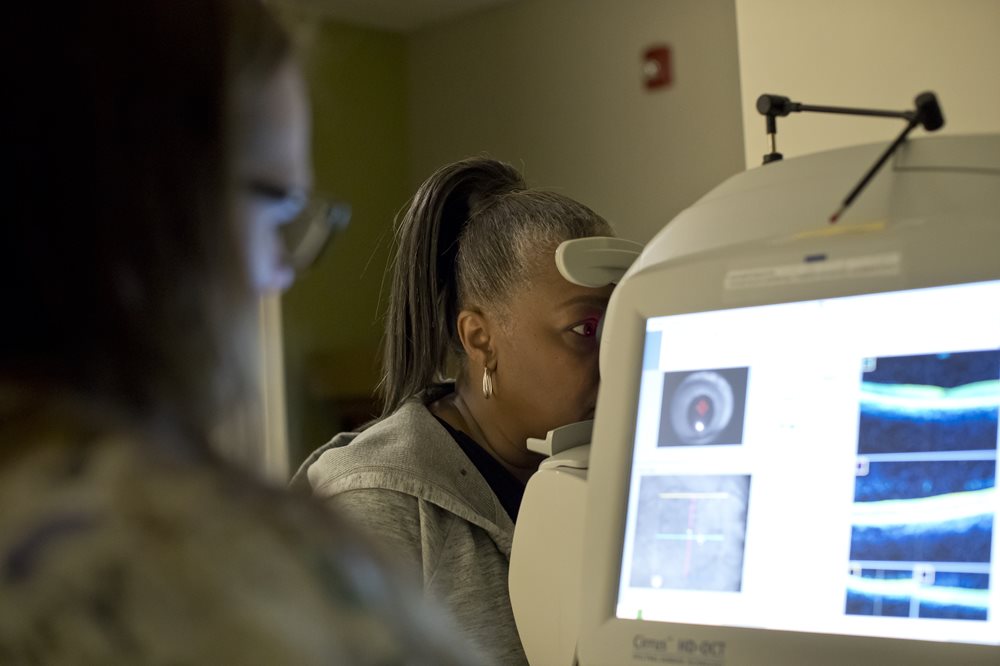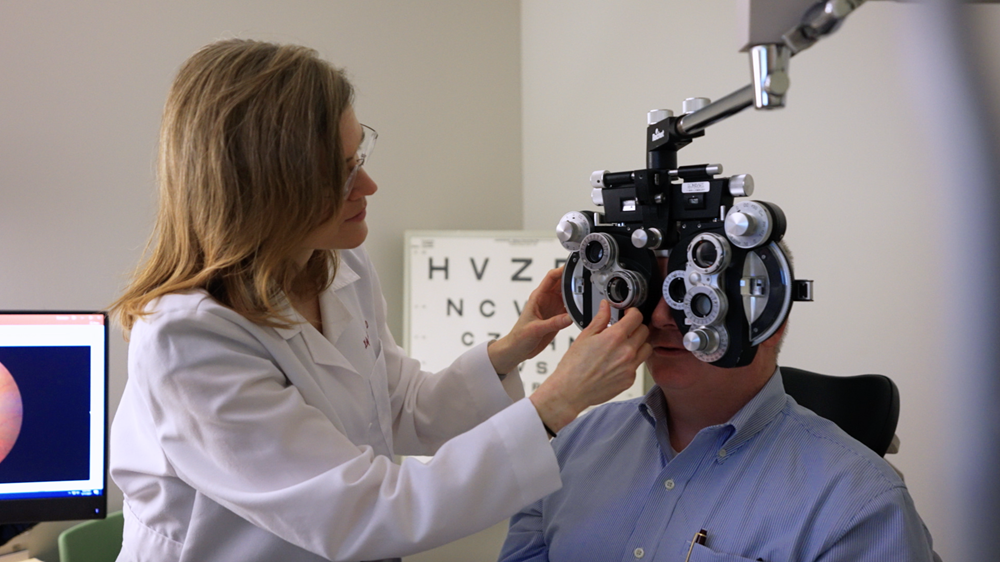The Eye Institute
Diabetes and Vision Loss
 Diabetes can damage your eyes over time and cause vision loss, even blindness. Eye diseases that can affect people with diabetes include diabetic retinopathy, macular edema, cataracts, and glaucoma. The good news is managing your diabetes and receiving regular eye exams can help prevent vision problems and stop them from getting worse.
Diabetes can damage your eyes over time and cause vision loss, even blindness. Eye diseases that can affect people with diabetes include diabetic retinopathy, macular edema, cataracts, and glaucoma. The good news is managing your diabetes and receiving regular eye exams can help prevent vision problems and stop them from getting worse.
- Diabetic retinopathy. The leading cause of blindness in American adults, diabetic retinopathy occurs when changes in the retina’s blood vessels cause either leaking of the vessels or growth of abnormal new blood vessels on the retina’s surface. This damage causes symptoms such as blurry vision, floaters and black spots in the field of vision, poor color perception and even blindness.
- Macular edema. The macula, the center of the retina that provides sharp, straight vision, can swell due to leaky blood vessels caused by diabetes. This can result in blurred or distorted vision.
- Glaucoma. One form of glaucoma, neovascular glaucoma, is caused by diabetes. High sugar levels can damage the retina’s blood vessels and result in the creation of abnormal new ones. When new blood vessels grow on the eye’s iris, it can cause an increase in eye pressure and glaucoma. Onset can be sudden and will present itself with blurriness, eye pain and redness, nighttime halos and headaches.
- Cataracts. Cataracts can form earlier and progress faster in people with diabetes due to the increase of sugar in the blood. This creates a cloudy buildup in the eye’s lens, resulting in a cataract. The symptoms are similar to glaucoma and diabetic retinopathy but may also include double vision, light sensitivity and night blindness.
 You can protect your vision and lower your chance for vision loss with these steps:
You can protect your vision and lower your chance for vision loss with these steps:
- Receive a dilated eye exam at least once a year so your eye doctor can spot any problems early when they’re most treatable.
- Keep your blood sugar levels in your target range as much as possible. Over time, high blood sugar not only damages blood vessels in your eyes, it can also affect the shape of your lenses and make your vision blurry.
- Keep your blood pressure and cholesterol levels in your target range to lower your risk for eye diseases and vision loss.
- Quit smoking. Quitting lowers your risk for diabetes-related eye diseases and improves your health in other ways too.
- Get active. Physical activity protects your eyes and helps you manage diabetes.Scheduling a comprehensive eye exam at least once a year is an excellent first line of defense against diabetic eye disease but you should contact your eye doctor sooner if you notice any visual changes.
During the exam, an optometrist can check for signs and symptoms of potential problems. To schedule an appointment at The Eye Institute, call 215.276.6111.